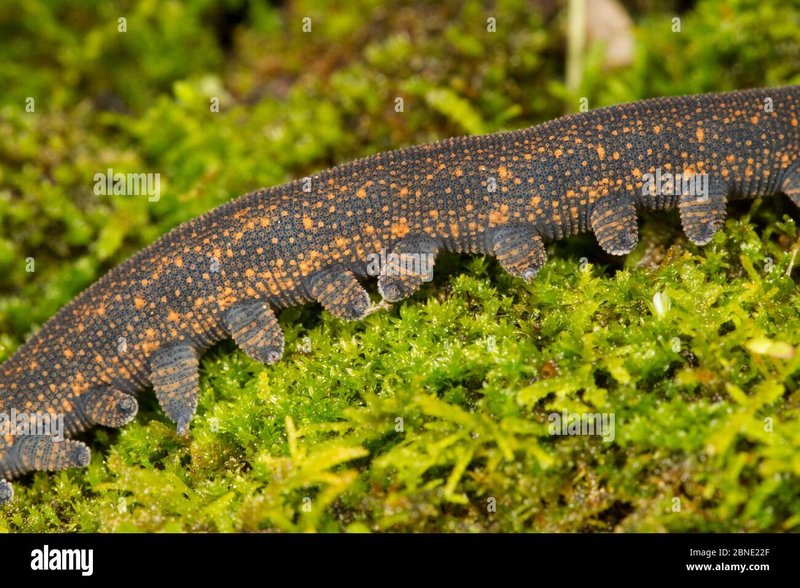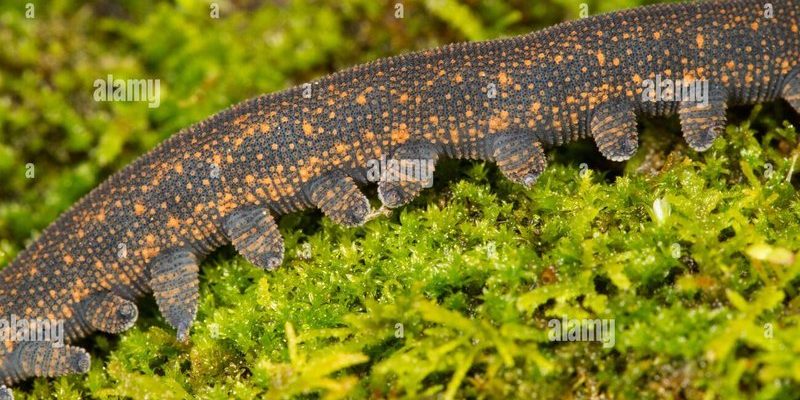
Velvet worms, scientifically known as Onychophora, are unique, soft-bodied animals that thrive in moist environments. They often find their perfect niche within the decaying wood of logs, especially those draped with vibrant green moss. But why these logs? Well, they offer not just shelter but also a buffet of food options like insects and decaying plant material. So, pour yourself a cup of coffee, and let’s explore just how these delightful creatures make the most of their habitats!
What Are Velvet Worms?
You might be wondering what velvet worms even are. Think of them as the whimsical cousins of both insects and snails, squished into a squishy, soft-bodied version that you might not expect to find in your backyard. These fascinating creatures can range from just a few millimeters to an impressive 20 centimeters long. They have a charming appearance, with segmented bodies covered in a silky texture that gives them their name.
Velvet worms belong to an ancient lineage that dates back over 500 million years, making them some of the oldest living creatures on the planet. They have a series of little legs, usually around 14 to 43 pairs, that help them maneuver through their leafy playgrounds. Their bodies are often colored in earthy tones, blending right into their surroundings—another clever survival tactic.
When you spot a velvet worm in its natural environment, don’t be surprised if it looks a bit sluggish. They have a unique hunting strategy: instead of chasing down their prey, they ambush it. With a flick of their slime-producing mouths, they can immobilize insects and then enjoy a leisurely meal. It’s a fascinating approach to survival that highlights their adaptation to life among mossy and decaying habitats.
Why Moss-Covered Logs Are Ideal
Moss-covered logs aren’t just pretty to look at—they provide an ideal space for velvet worms to thrive. First off, these logs create a humid microclimate, keeping moisture levels high, which is essential for the worms. Being soft-bodied, they can easily dry out, and moss acts like a natural sponge, soaking up moisture from the surrounding environment.
Secondly, these logs offer protection from predators. Think of them as the velvet worms’ cozy hideaway. The moss and decayed wood provide an element of camouflage, allowing them to blend in with their environment. This helps them avoid becoming a meal for predators like birds or small mammals. In a way, it’s like having a secret fort where they can relax without worry.
Lastly, the decaying wood and moss serve as a food source. Velvet worms feed on smaller insects and decomposing plant matter found within these logs, creating a little ecosystem all their own. This relationship shows how interconnected life can be—even in the smallest corners of our forests.
Temperature and Humidity: The Perfect Balance
So, what kind of conditions do velvet worms need to feel at home? Honestly, they thrive in warm, humid environments, often found in tropical and subtropical regions. Their habitats usually maintain temperatures between 15 to 25 degrees Celsius, with high humidity levels, ideally over 70%.
This balance is crucial for their survival. Too dry, and they risk desiccation; too wet, and they could drown. Moss-covered logs strike the perfect balance, providing that essential humidity while allowing for some air circulation.
If you’re ever curious about creating a mini habitat for these fascinating creatures at home (if you’re lucky enough to find one), maintaining the right temperature and humidity is key. Keeping your mossy log in a shady spot, away from direct sunlight, can help mimic their natural environment and keep them happy.
The Role of Decay in the Ecosystem
Now, you might be thinking, “What’s the deal with decay?” Well, decay is an essential process in ecosystems. It might sound a bit grim, but the breakdown of organic matter is crucial for nutrient cycling. As logs decay, they release vital nutrients back into the soil, feeding plants and supporting a diverse range of life.
In this process, velvet worms play a unique role. By feeding on decaying material and other small creatures, they help break down organic matter even further. This, in turn, aids in the recycling of nutrients, maintaining the balance in their habitat. Essentially, they are tiny recyclers in the grand scheme of things, working to keep the forest healthy and thriving.
Without these small creatures doing their part, the entire ecosystem could falter. It’s a reminder of how every creature, no matter how small, has its place in the circle of life.
Common Threats to Velvet Worm Habitats
As charming as velvet worms and their habitats are, they face significant threats. Habitat loss is a major issue, mainly due to deforestation and urbanization. When humans chop down trees or alter landscapes, it disrupts the delicate balance of these ecosystems, leaving velvet worms and their homes vulnerable.
Climate change is another big concern. With rising temperatures and fluctuating humidity levels, the perfect conditions that velvet worms need to thrive might become scarce. Imagine a cozy blanket slowly unraveling; that’s what climate change could do to their habitats.
Even pollution can have a negative impact. Chemicals and pesticides can seep into the soil and water systems, poisoning the very environment that these creatures call home. It’s heartbreaking to think that our actions could put such unique life forms at risk. We need to be mindful of our impact on nature and consider how we can protect these incredible habitats.
Conservation Efforts and What You Can Do
You might be wondering, “How can I make a difference?” There are steps you can take to help protect velvet worms and their environments. Supporting conservation efforts in your area, whether through volunteering or donating, can significantly impact local ecosystems. Many organizations work tirelessly to preserve habitats and educate the public about the importance of these unique creatures.
Additionally, you can help by advocating for sustainable practices. If you have a garden or outdoor space, consider planting native plants and avoiding chemical pesticides. These small changes can contribute to creating a healthier environment for not just velvet worms but all types of wildlife.
Remember, every little effort counts. Whether you’re spreading awareness or making mindful choices in your daily life, you can help ensure that velvet worms continue to thrive in their cozy, moss-covered logs for generations to come.
In conclusion, velvet worms are remarkable creatures that find their homes in moss-covered logs, thriving in the moist, decaying environments these logs provide. By understanding their habitats and the importance of preserving them, we can appreciate the delicate balance of nature and protect these fascinating beings in our ecosystems. So next time you walk through a forest, take a moment to appreciate the little wonders hidden beneath the mossy surfaces. After all, every corner of nature has a story waiting to be discovered.

